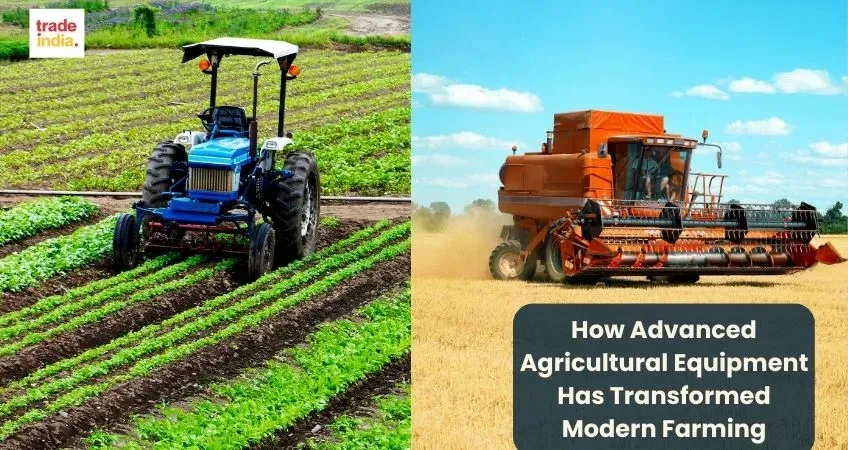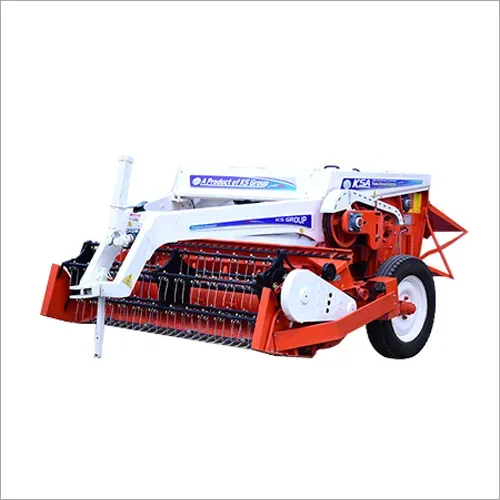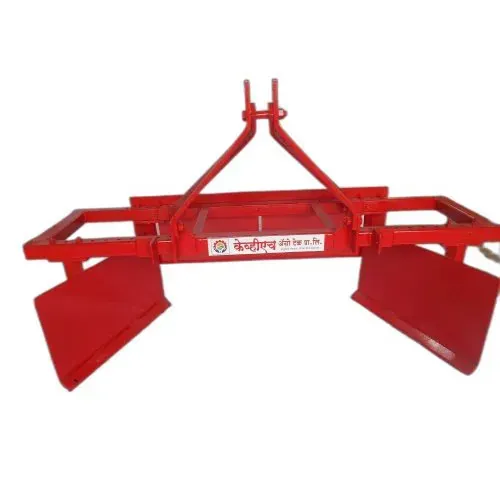How Advanced Agricultural Equipment Has Transformed Modern Farming

Modern farming has taken over the traditional ways with advanced agricultural equipment and new astounding methods, boosting productivity and reducing wastage. Farmers are able to effectively manage their land and enhance the yield with modern agricultural equipment. For example, modern tractors come equipped with GPS technology that offers precise plantation of crops and reduces the wastage of resources. Moreover, a lot of equipment automates the farming processes, saving both time and money for the farmers and offering continuous productivity.
Benefits of Advanced Agricultural Equipment
Enhanced Efficiency and Productivity
Advanced agricultural equipment facilitates planting, cultivating, and harvesting crops fluidly without much effort. Such equipment includes GPS tractors, automatic harvesters, and many more, enabling farmers to execute fast operations with enhanced efficiency. Their accuracy and speed help save time for every activity during the day and allow them to focus on other essential agricultural tasks important for producing more yield.
Improved Resource Management
Automatic equipment offers high precision and accuracy for agricultural operations ensuring reduction in waste and efficient use of resources. This equipment also includes soil sensors and variable rate technology, which indicates the optimal usage of resources like water, fertilizers, pesticides, etc. This equipment indicates the precise dosage of inputs, when only needed, reducing wastage and lowering plantation costs.
Cost Savings
The automation provided by modern agricultural machinery helps reduce labor costs by minimizing the need for manual labor. Additionally, accurate input application decreases the quantity of fertilizers, pesticides, and water required, leading to reduced costs. Overall, these advancements offer significant cost savings and address labor shortages effectively.
Enhanced Data-Driven Decision Making
Data analytics and farm management software provide real-time insights into crop health, soil conditions, and weather patterns. This information allows farmers to make informed decisions and take timely actions, while predictive analytics help anticipate issues such as pest infestations or diseases, enabling proactive management and improving overall farm performance.
Increased Crop Yields
Precision planting and nutrient application foster uniform crop growth, which translates into higher and more consistent yields. By optimizing growing conditions through precise management of inputs and environmental factors, advanced equipment helps maximize crop production and ensures better quality and quantity of harvests.
Environmental Benefits
Advanced agricultural equipment reduces pollution by minimizing the runoff of fertilizers and pesticides, thus protecting water sources and lowering the environmental footprint. Additionally, efficient resource use and reduced reliance on fuel-intensive manual labor contribute to a smaller carbon footprint, supporting more sustainable farming practices.
Enhanced Safety and Comfort
Automation and advanced controls in modern machinery reduce the physical strain on farmers, making tasks less strenuous and enhancing safety. Features such as automatic shut-offs and collision avoidance systems further improve operational safety, creating a safer working environment and reducing the risk of accidents.
Greater Flexibility and Adaptability
Many advanced agricultural machines offer multifunctionality, performing tasks such as planting, fertilizing, and cultivating with a single piece of equipment. This versatility reduces the need for multiple machines and allows the equipment to be adjusted for different soil types, crop varieties, and field conditions, making it adaptable to various farming needs.
Improved Field Management
Advanced equipment helps manage complex field layouts and irregular shapes efficiently, optimizing land use and improving field management. Additionally, machinery designed for diverse terrain ensures that all parts of the field are accessible, minimizing unproductive areas and improving overall field productivity.
Future-Proofing Farming Operations
Investing in advanced equipment prepares farms for future technological advancements and ensures seamless integration with emerging innovations in agriculture. This forward-thinking approach enhances farm competitiveness by boosting productivity and efficiency, helping farmers stay ahead in an evolving industry.
Applications of Various Agricultural Equipment
Tractors and Plows
Tractors equipped with plows and cultivators are essential for preparing the soil for planting. They help in breaking up and turning the soil, which is crucial for seedbed preparation and effective planting.
Seeders and Planters
These machines ensure accurate and efficient planting of seeds at the correct depth and spacing, leading to optimal crop growth and yield.
Sprinklers and Drip Systems
Agricultural equipment such as sprinkler systems and drip irrigation setups are used to distribute water efficiently across crops. These systems help in maintaining soil moisture and supporting healthy crop development.
Pumps
Pumps are used to draw water from various sources (e.g., wells, rivers) and distribute it through irrigation systems, ensuring crops receive adequate water supply.
Fertilizer Spreaders
These machines are used to apply fertilizers evenly across fields. They can be adjusted to deliver the precise amount of nutrients needed, improving crop growth and yield.
Liquid Fertilizer Injectors
These systems integrate with irrigation systems to deliver liquid fertilizers directly to the plant roots, enhancing nutrient uptake and efficiency.
Sprayers
Agricultural sprayers are used to apply pesticides and herbicides to control pests and weeds. They ensure even coverage and effective treatment of crops.
Weeders
Specialized equipment for weed management helps in removing weeds from fields, reducing competition for nutrients and water.
Combine Harvesters
Combine harvesters are used to efficiently harvest grain crops, such as wheat, corn, and soybeans. They combine cutting, threshing, and separating into one operation, speeding up the harvest process.
Forage Harvesters
These machines are used to cut and collect forage crops, such as hay and silage, which are essential for animal feed.
Tillage Equipment
Plows, harrows, and rotary tillers are used to manage soil structure and health. They help in breaking up compacted soil, incorporating organic matter, and preparing the soil for planting.
Soil Conditioners
Equipment like disc harrows and field cultivators help in improving soil texture and structure, enhancing water infiltration and root growth.
Feed Mixers and Dispensers
These machines are used to prepare and distribute feed for livestock, ensuring they receive balanced nutrition.
Manure Spreaders
Manure spreaders are used to apply animal waste as fertilizer, recycling nutrients back into the soil and improving soil fertility.
Grain Dryers
Grain dryers are used to reduce the moisture content of harvested grains, preventing spoilage and ensuring proper storage.
Seed Cleaners
Seed cleaning equipment removes debris and impurities from harvested seeds, preparing them for storage or planting.
Data Collection Systems
GPS and sensor technologies are used for precision farming, collecting data on crop health, soil conditions, and field performance to optimize farm management decisions.
Automated Systems
Farm management software and automated systems help in planning, monitoring, and managing various farm operations efficiently.
Vineyard and Orchard Equipment
Specialized equipment such as grape harvesters and orchard sprayers is used for managing and harvesting fruit crops, ensuring optimal care and productivity.
Climate Control Systems
Greenhouses and high tunnels equipped with climate control systems manage temperature, humidity, and light levels to optimize growing conditions for sensitive crops.
How Agricultural Equipment Contributes to Cost Savings
Reduced Labor Costs
Advanced agricultural machinery, such as autonomous tractors and harvesters, reduces the need for manual labor. Automation streamlines tasks like planting, cultivating, and harvesting, leading to significant savings on labor costs and mitigating issues related to labor shortages.
Modern equipment operates with high precision and speed, performing tasks more quickly and effectively than manual labor, which further reduces the number of labor hours required.
Optimized Resource Usage
Equipment equipped with GPS and variable-rate technology ensures that resources such as water, fertilizers, and pesticides are applied precisely where needed. This targeted approach minimizes waste and reduces the overall quantity of inputs used, leading to cost savings.
Advanced irrigation technologies, such as drip and sprinkler systems, deliver water more efficiently, reducing water consumption and associated costs.
Enhanced Equipment Efficiency
Many modern agricultural machines offer multifunctionality, performing multiple tasks with a single piece of equipment. This versatility reduces the need for multiple specialized machines, cutting down on both equipment costs and maintenance expenses.
Newer models of tractors and machinery are designed to be more fuel-efficient, lowering fuel costs over time and reducing overall operating expenses.
Increased Crop Yields
Equipment like soil sensors and precision planters helps optimize growing conditions and resource use, leading to higher and more consistent crop yields. Increased productivity translates to better revenue and more efficient use of inputs.
Combine harvesters and other advanced harvesting equipment to operate more efficiently, reducing the time and cost associated with harvesting and increasing the amount of usable crop harvested.
EXPLORE MORE:


